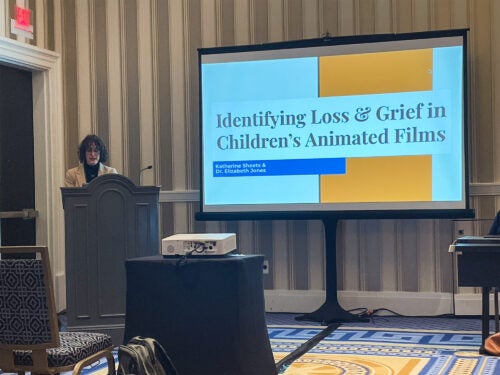
In recent years, children’s shows have been working on portraying more realistic and relatable content to their audiences. While this means kids can understand and connect to their favorite shows, it also means that more difficult to navigate topics are being discussed – one of which being grief and loss. Katherine Sheets, content writer for the School of Nursing, wondered how children’s media, particularly animated films, were navigating these topics. With assistance from Elizabeth Jones, an associate professor at Asbury University, Sheets conducted a study to answer this question. They presented their study “Identifying Loss and Grief in Children’s Animated Films” at the National Communication Association conference in November.
The study aimed to observe how children’s media portrays grief and loss – in particular, non-death related grief. By studying the most popular animated children’s films from the past 30 years, Sheets found that the results indicated children’s media has the great potential to act as both a positive and a negative way to teach children about loss. Films primarily teach children through the means of observational learning – meaning that what kids see on television is likely something that they will do as well, both positive and negative things.

Sheets recognized the potential dangers of this, saying “this presents enormous opportunity and warning. If what we demonstrate in films is not realistic – like the absence of grief – we can inadvertently contribute to a child misunderstanding loss and learning unhealthy grieving responses.”
However, there is also the potential for the media to show healthy ways to deal with these emotions, and therefore teaching children how they can act when they encounter grief, loss or any other situation.